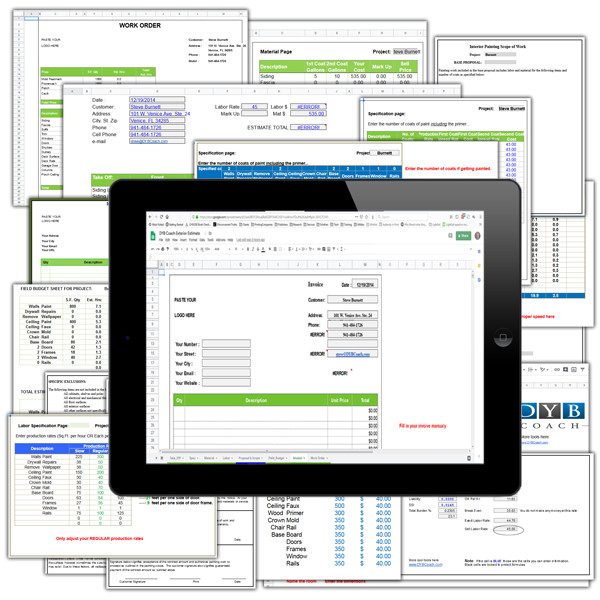
Painting Contractor Shares Production Rates for Siding
In this post, I want to share with you our production rates for painting a siding, but first, I will share 3 factors that we take into account when we are putting our production rates together, so you can use them when putting your production rates together.
We get a lot of siding painting jobs up here in New England, especially homes from 1990 and above, so production rates being accurate means a lot to us.
Three (3) Factors to Consider When Determining Siding Production Rates
1. The Condition Of The Siding And Working Area
We are assuming our prep has already been accounted for, so we have a rough side, and we have a smooth side on the siding depending on which way the carpenter or builder puts them on the house.
The rough side takes a little longer if you are using a brush.
Also, by ‘condition’ I mean we have to account for questions like, are we working from the ground level, or on a ladder? Or maybe 20 feet in the air?
Are we working on the side of a house 20 feet in the air and you’ve got to keep the wet edge so we don’t end up with lap marks? (Lap marks is when we have twice as much paint on certain areas while you are moving your ladder and you end up with stripes on it when it dries)
Your production rate will eventually go lower when you run into those variables.
2. Method Of Paint Application
How are we applying the paint?
We actually have different production rates for different applications.
Of course, if we are spraying, we have to spray and back brushing.
Spraying is fast, everybody loves to spray and it gets it done, but we also have to take into consideration the prep of masking everything off, covering everything that you don’t want any over-spray on, and pray it is a nice, non-windy day.
The next method would be using maybe something like a hot dog roller, sausage roller, or a whizzy, whatever you call it.
You use a brush and just cut it in really quick, then you use those to roll out the side, that goes very fast.
Then thirdly, we would use a brush, maybe a 3 or 4-inch brush, the production is going to go down a little bit.
Some homeowners prefer everything brushed, so we also have a production rate with that.
A little key with that is, you want to discuss the application process with the homeowner, because a lot of painters won’t, so ask them what they want, because everybody has heard these horror stories of spray painting, for instance.
You got to let them know that spraying isn’t bad if it is going to be back brushed in most cases.
We have those production rates for different things.
3. The Experience of the Painter
We want to keep into consideration the experience of the applicator –the painter, the craftsmen, whatever you call them.
Are they a brand new person, are they a greenhorn, are they just learning?
Maybe they have only been painting for a month, some of us call them apprentices, you can call them what you want, they are newbies, and they don’t have the experience as a person who has been in the field for a few years, painting the same substrate.
So, we have to take that into consideration.
Well, today, we took a new painter we have, who has only been with us for a little over a month now, and we gave him a section to paint and we timed him.
I like timing things under half an hour, (because during the hour, they might be interrupted) and then we multiply it by 2 to get our 1-hour production rates.
Our Siding Production Rate
We found that an 8ft by 8ft area, he didn’t need a 4-foot ladder to get the first couple pieces of siding, way up at the top, it took him 31 minutes.
So in a half an hour, he was able to paint (8×8) 64 square feet, so for one hour that would be 128 square feet using a 4-inch brush.
It came out great, that was the first coat, and the second coat went a little faster because everything had been set up and the surface was smooth.
On another section, we did an 8 by 8, we actually had a door in between, it worked out perfect, he had to cut in a little bit and then he used the hot dog, roller –he finished the second 8ft by 8ft section in 20 minutes.
As you can see, it’s quite a saving using the roller.
So, depending on the application process, your production rates are going to change.
My production rate is 128 square feet per hour for application, that gives me a great idea of how many hours it is going to take to put the first coat on, and then when they are applying the second coat on, we are going to measure again.
I hope this helped?
Quick recap: My siding production rates, once again, is 128 square feet an hour for a person who has a little experience with a brush and roller
If I can help with anything, if you need a production rate on something and we are working on, please ask away, we will measure it the next time we can, and I will share those with you.
I am Ron Ramsden, a DYB Coach, and also a painting contractor.
You can find me at ron@dybcoach.com

